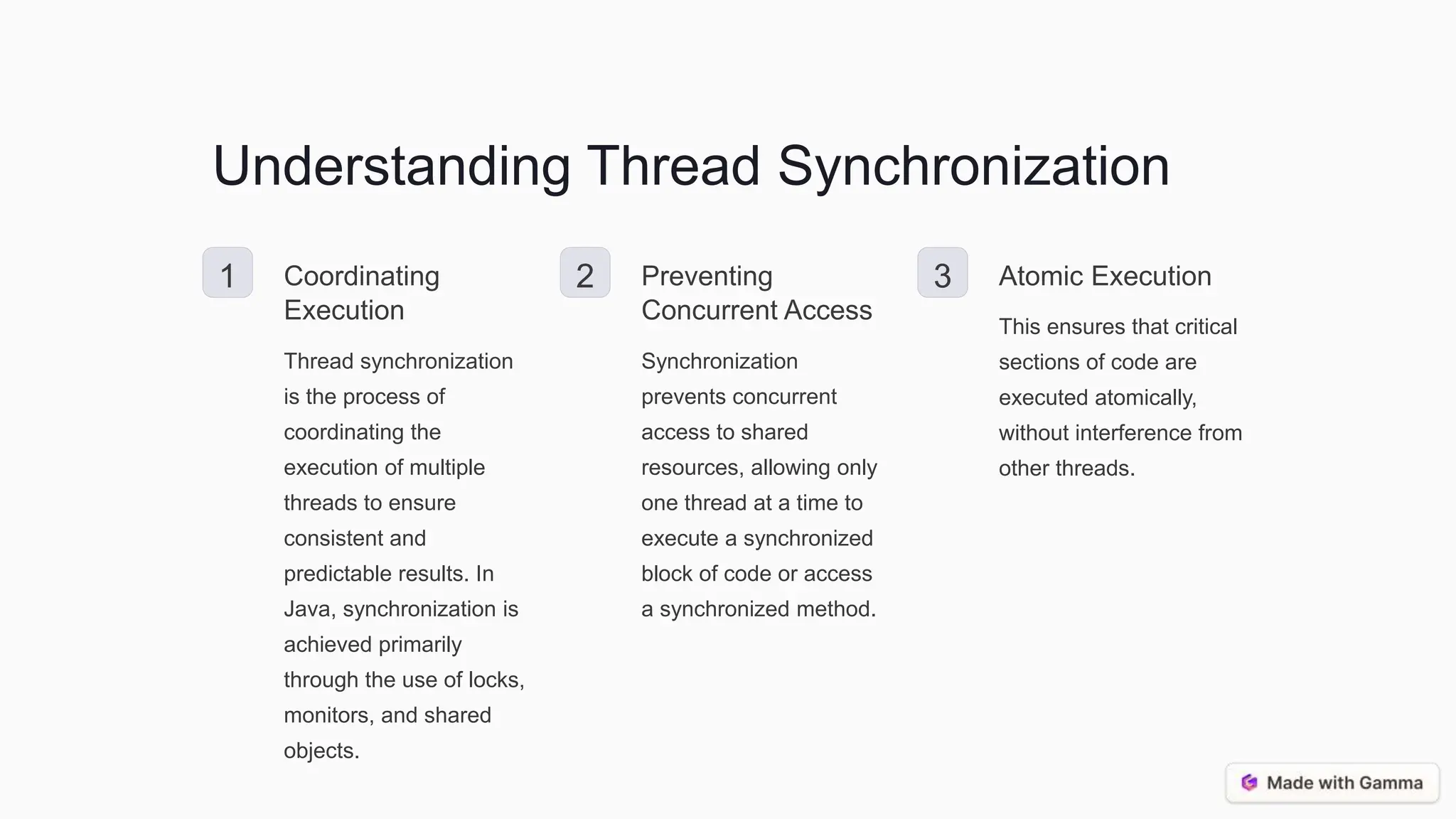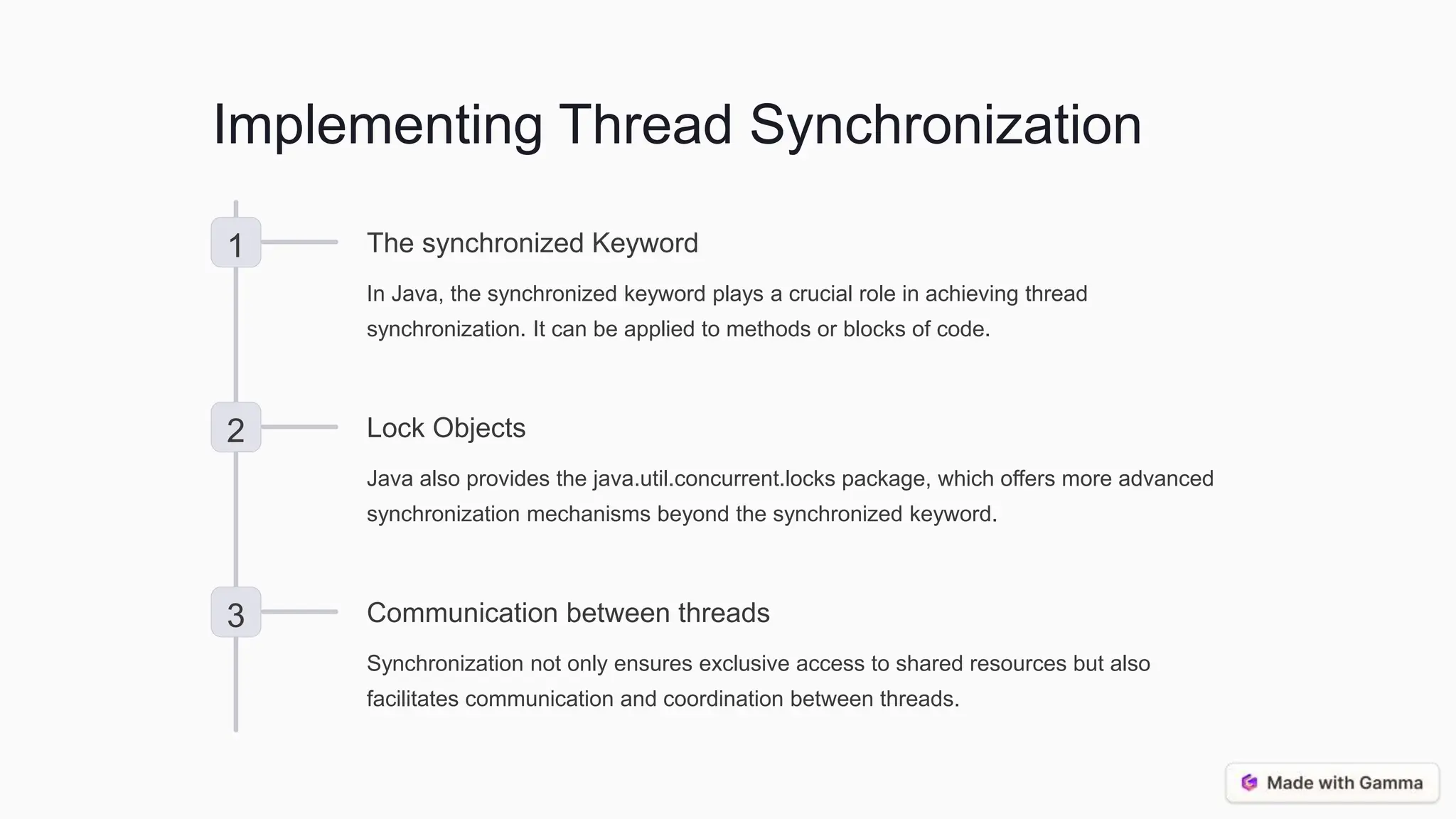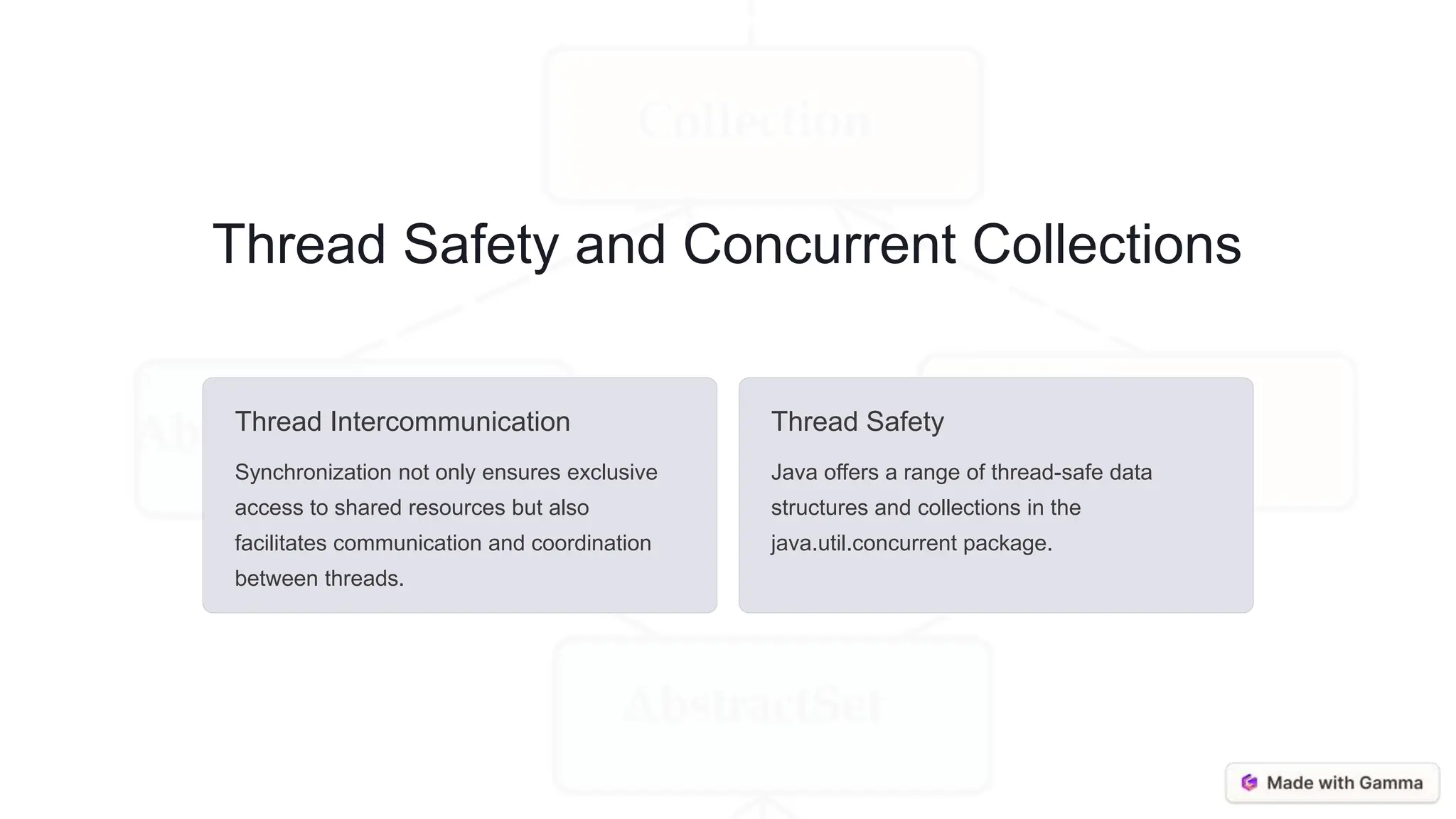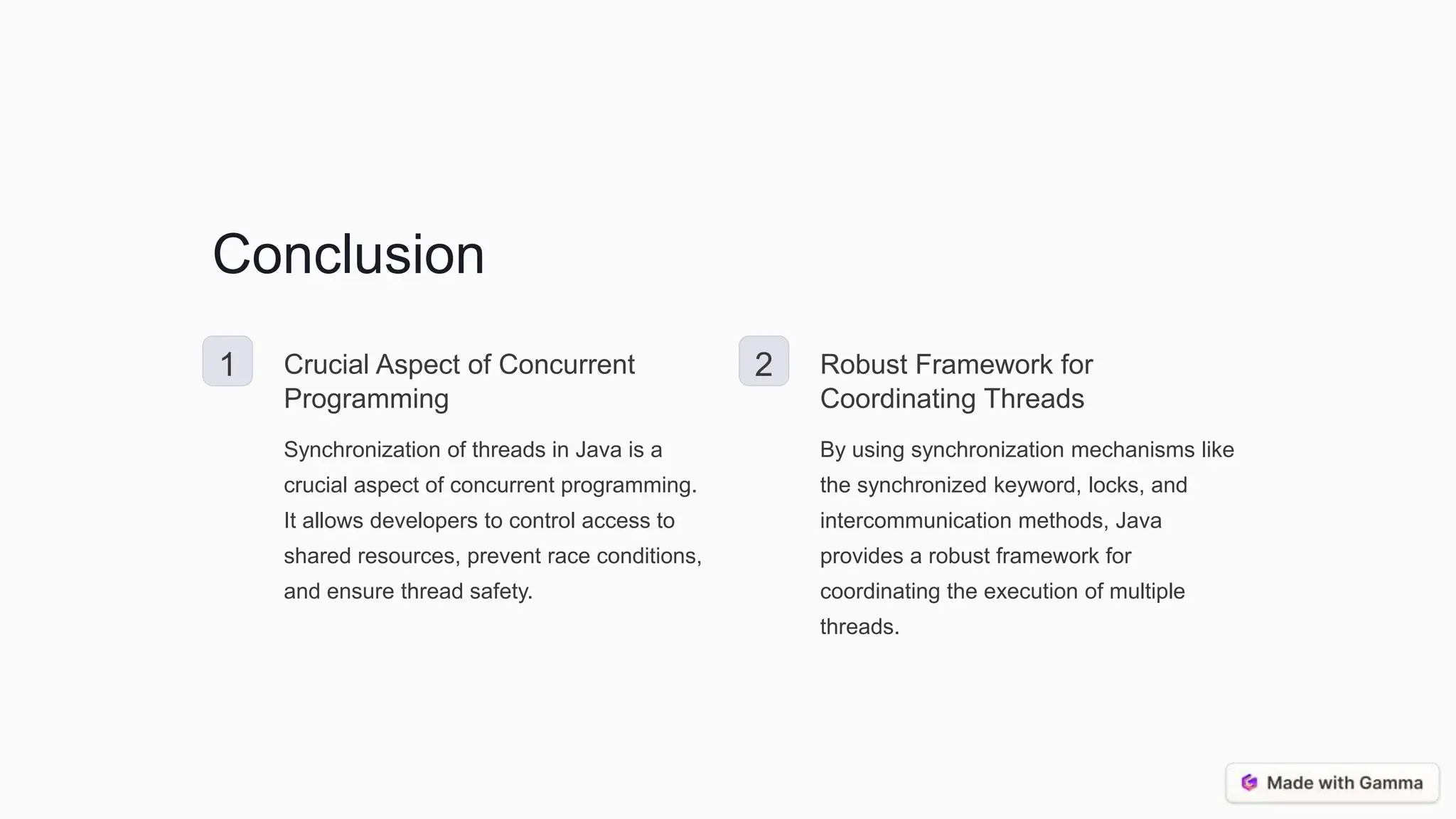The document discusses thread synchronization in Java multithreading, focusing on the importance of coordinating the execution of threads to prevent issues such as race conditions and deadlocks. It outlines mechanisms like the synchronized keyword and lock objects for managing access to shared resources and ensuring thread safety. The conclusion emphasizes the necessity of understanding and implementing these synchronization techniques for reliable and efficient concurrent programming.







